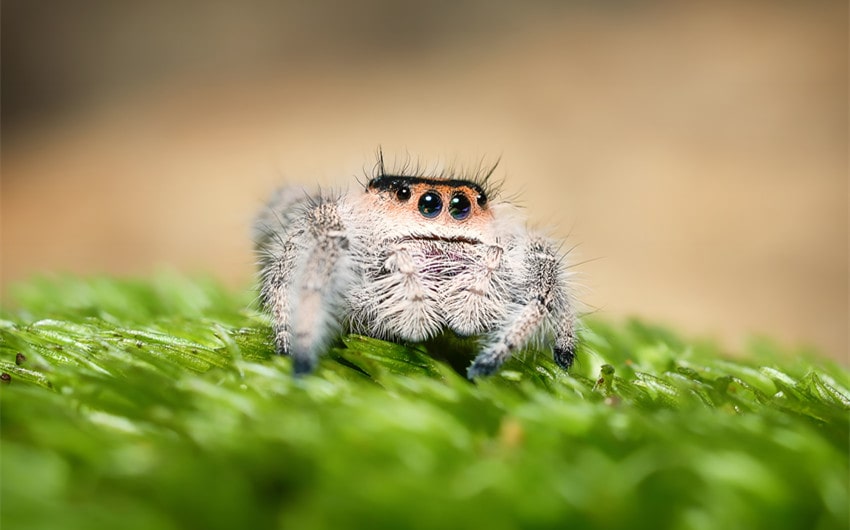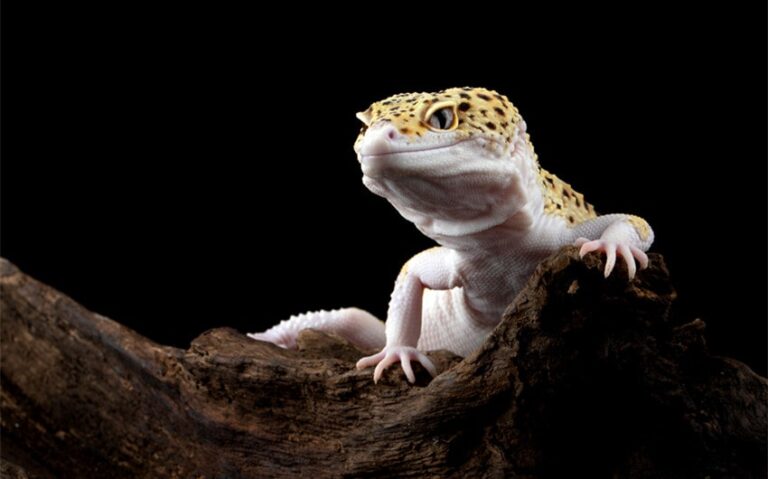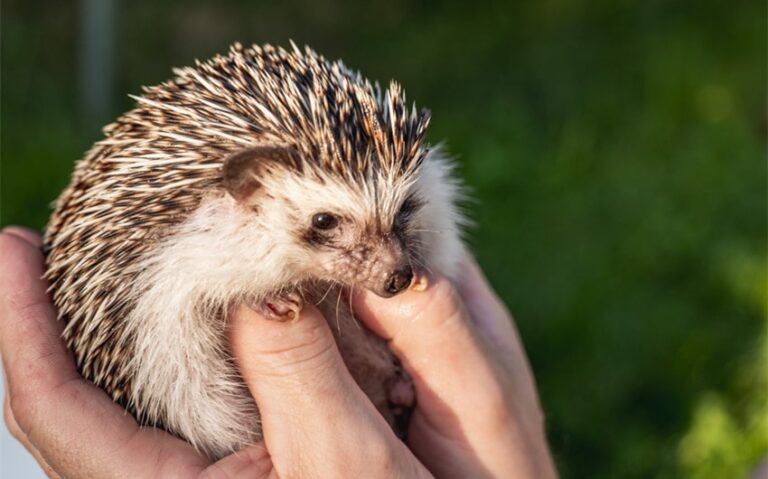How to Successfully Keep Jumping Spiders as Pets
Thinking of adding an unconventional pet to your home? Jumping spiders as pets might be the perfect choice for you. These tiny arachnids are fascinating to watch with their incredible jumping abilities and curious behaviors.
They require minimal space and maintenance, making them ideal for both seasoned pet owners and beginners. Whether you’re intrigued by their unique characteristics or looking for a low-maintenance pet, jumping spiders can bring a little piece of nature into your living space in an engaging and manageable way.
Understanding Jumping Spiders
Jumping spiders are part of the Salticidae family, known for their remarkable agility and keen vision. Unlike other spiders that rely on webs to catch prey, jumping spiders are active hunters. They have a distinctive appearance with compact bodies and large, forward-facing eyes that provide excellent binocular vision. This vision allows them to accurately judge distances and pounce on their prey with precision.
Species Commonly Kept as Pets
Several species of jumping spiders are popular among pet enthusiasts. The most common include the Phidippus regius (Regal Jumping Spider), Phidippus audax (Bold Jumping Spider), and Salticus scenicus (Zebra Jumping Spider). These species are known for their vivid colors, distinctive markings, and friendly behavior, making them ideal candidates for captivity.
Natural Habitat and Behavior
Jumping spiders are found worldwide, from tropical rainforests to temperate regions. They prefer habitats with plenty of vertical surfaces to climb, such as trees, walls, and even window sills. In the wild, they hunt during the day, using their excellent eyesight to spot and stalk prey, which mainly consists of insects and other small arthropods.
Their behavior is highly interactive and curious. They are known to observe their surroundings intently, often turning to look at humans and other objects with apparent interest. This makes them particularly engaging pets, as their behavior can be quite entertaining and endearing.
Benefits of Keeping Jumping Spiders as Pets
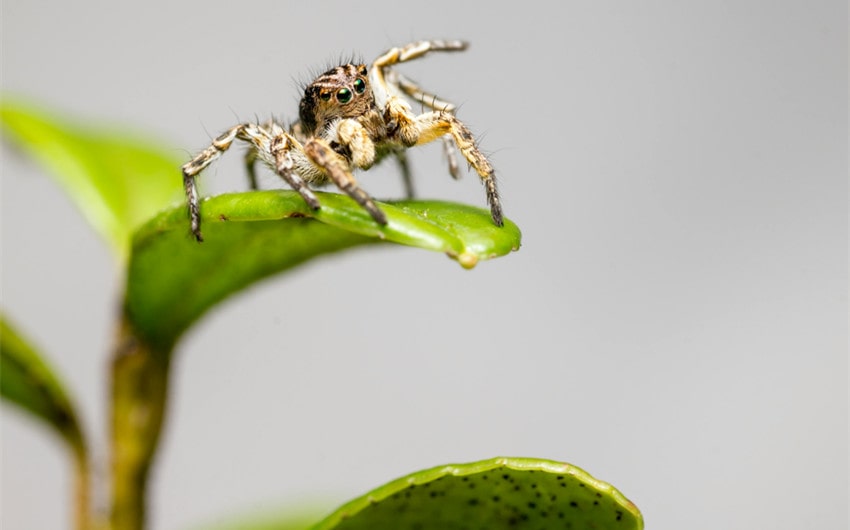
Jumping spiders are becoming increasingly popular as pets due to their unique attributes and the advantages they offer over more traditional pets. Here are some of the key benefits of keeping jumping spiders as pets:
1. Low Maintenance
One of the most appealing aspects of jumping spiders is their low maintenance requirements. Unlike dogs that need daily walks or cats that require regular litter box cleaning, jumping spiders are content with minimal intervention. They do not need large enclosures, frequent feedings, or extensive cleaning routines.
A small, well-ventilated enclosure with a few hiding spots and climbing structures is sufficient to keep them happy and healthy. Their infrequent feeding schedule, typically requiring live insects only a few times a week, makes them ideal for people with busy lifestyles or limited space.
2. Small Space Requirement
Jumping spiders are ideal for those living in apartments or homes with limited space. Their enclosures, which can be as small as a shoebox, fit comfortably on a shelf or desk, requiring far less room than traditional pets like dogs or cats.
This compact living arrangement also means they can be easily transported if needed, such as during a move or a visit to a classroom for educational purposes. Despite their small size, their enclosures can be decorated creatively to mimic their natural habitat, providing both an attractive display and a comfortable home for the spider.
3. Fascinating Behaviors to Observe
Jumping spiders are known for their engaging and curious behaviors. Unlike many other spiders, they are active hunters and do not rely on webs to catch their prey. Watching a jumping spider stalk and pounce on its prey can be both thrilling and educational. Their movements are swift and precise, demonstrating remarkable agility and coordination.
Additionally, their interactions with their environment and their human caretakers can be quite endearing. They are known to turn and look at humans, seemingly observing them with interest, which can create a sense of connection. Their courtship dances, where males perform elaborate movements to attract females, are particularly captivating to watch.
4. Cost-Effective
Keeping a jumping spider is relatively inexpensive compared to other pets. The initial setup, including a small enclosure, substrate, and a few accessories, is affordable. Ongoing costs are minimal, as they primarily eat insects, which can be easily sourced or even cultivated at home.
This makes them a budget-friendly option for those who want a pet without the financial burden. There are no vet bills or grooming costs, and even their habitat can be created using recycled materials, further reducing expenses.
5. Educational Value
Jumping spiders can provide a unique educational opportunity, especially for children and students interested in biology and entomology. Observing their behavior, feeding habits, and life cycle can offer valuable insights into the world of arachnids. They can also help dispel common fears and misconceptions about spiders, fostering a greater appreciation for these fascinating creatures.
Children can learn about ecosystems, predator-prey relationships, and the importance of biodiversity by observing their pet spiders. Additionally, keeping a spider can teach responsibility and the importance of caring for living creatures.
6. Quiet and Hypoallergenic
For individuals who are sensitive to pet dander or noise, jumping spiders are an excellent alternative. They are completely silent and produce no allergens, making them suitable for people with allergies or those who prefer a quiet household.
This can also be beneficial for families with young children or anyone looking for a pet that won’t disturb their living environment. Unlike pets that bark, meow, or chirp, jumping spiders go about their day quietly, allowing you to enjoy their presence without any noise disruption.
7. Short Lifespan
While it might seem like a drawback, the relatively short lifespan of jumping spiders (usually one to two years) can be a benefit for some pet owners. It allows for the experience of caring for a pet without the long-term commitment required by other animals.
This can be particularly appealing for those who are new to pet ownership or are unsure about making a long-term commitment. It also provides an opportunity to experience different species and their unique behaviors within a relatively short timeframe.
Essential Care Tips
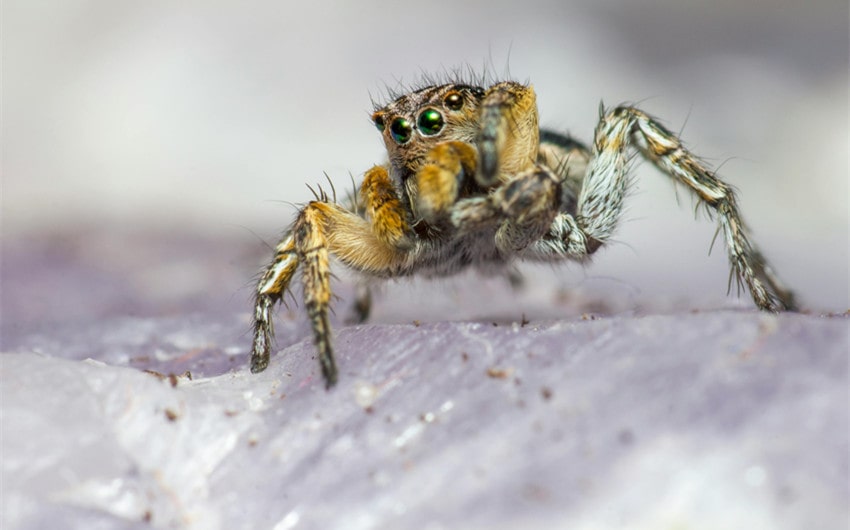
1. Setting Up a Habitat
Creating a suitable habitat for your jumping spider is crucial to ensure its health and happiness. A well-thought-out enclosure mimics their natural environment and provides the necessary elements for them to thrive. Here are the essential steps and considerations for setting up a habitat for your jumping spider:
Choosing the Right Enclosure
The enclosure is the foundation of your spider’s habitat. It should be secure, well-ventilated, and appropriately sized. A small to medium-sized enclosure, such as a 5-10 gallon tank, is sufficient for most jumping spiders. It should be tall rather than wide to accommodate their climbing behavior.
Glass or clear plastic enclosures are ideal as they allow for easy observation and cleaning. Ensure the material is sturdy and escape-proof. The enclosure should have a secure, ventilated lid to prevent escapes and ensure proper airflow, with fine mesh or perforated plastic lids working well.
Essential Habitat Elements
Creating a habitat that closely resembles the jumping spider’s natural environment will make them feel more at home. Use a substrate that retains moisture but also allows for drainage, such as coconut fiber, potting soil, or a mix of both. A layer of about 1-2 inches is sufficient.
Provide multiple hiding spots for your spider to retreat to, such as small pieces of bark, cork, or artificial plants. Hollow decorations like small tubes or containers can also serve as excellent hiding spots.
Jumping spiders love to climb, so include various vertical elements like twigs, branches, and artificial plants to offer climbing opportunities and create a three-dimensional environment. Add decorative elements like small rocks, leaves, and moss to make the habitat more visually appealing and stimulating for your spider.
Temperature and Humidity Requirements
Maintaining the right temperature and humidity levels is crucial for the well-being of your jumping spider. Most jumping spiders thrive in temperatures between 70-80°F (21-27°C), and room temperature is usually sufficient.
In cooler climates, a small heat source like a low-wattage heat lamp can be used. While jumping spiders do not require high humidity, maintaining a moderate level (around 50-60%) is important.
Use a spray bottle to mist the enclosure lightly every few days, but avoid over-misting, as excessive moisture can lead to mold growth and health issues. Regular monitoring of these conditions is essential to keep your spider healthy and comfortable.
Lighting
Jumping spiders benefit from a natural light cycle to regulate their behavior and health. Place the enclosure in a location where it can receive natural daylight, but avoid direct sunlight which can overheat the enclosure. If natural light is not available, use a full-spectrum light bulb to simulate daylight.
Ensure the light source is not too intense, as this can stress the spider. Providing a consistent light-dark cycle will help maintain the spider’s natural rhythms and behaviors, contributing to its overall well-being.
2. Feeding and Nutrition
Proper feeding and nutrition are essential for the health and well-being of your jumping spider. A balanced diet not only ensures they receive the necessary nutrients but also keeps them active and engaged. Here are key considerations and tips for feeding your jumping spider:
Types of Food
Jumping spiders are carnivorous and primarily eat live insects. Common food sources include small crickets, fruit flies, roaches, and mealworms. It is important to choose prey that is appropriately sized for your spider; generally, the prey should be no larger than the spider’s body.
Variety is key to providing a balanced diet, so try to offer different types of insects regularly. In the wild, jumping spiders may also consume other small arthropods, so providing a mix of prey items can mimic their natural diet and ensure they receive a range of nutrients.
Feeding Schedule and Tips
Jumping spiders do not need to eat every day. A typical feeding schedule might involve offering food every 2-3 days, with younger spiders (slings) needing more frequent feedings compared to adults. Observe your spider’s behavior to determine its hunger levels; a hungry spider will often show increased activity and hunting behavior.
Place live prey in the enclosure and allow the spider to hunt naturally. Remove any uneaten prey after 24 hours to prevent stress or harm to the spider. Overfeeding can lead to obesity and other health issues, so it’s important to strike a balance and avoid giving too much food at once.
Ensuring Proper Nutrition
Providing a varied diet is crucial for the nutritional health of your jumping spider. In addition to offering different types of insects, you can also gut-load the prey before feeding. Gut-loading involves feeding the insects nutritious foods such as leafy greens, fruits, and grains for 24-48 hours before offering them to your spider.
This process enriches the prey with essential vitamins and minerals, which in turn benefits your spider. Additionally, dusting the prey with a calcium supplement occasionally can help support the spider’s exoskeleton health, especially important during molting periods.
Hydration
Jumping spiders do not drink water in the same way as many other pets. Instead, they obtain moisture from their prey and from droplets of water in their environment. Lightly misting the enclosure with water every few days provides necessary hydration.
Make sure the enclosure is not over-misted, as excessive moisture can lead to mold growth and other issues. Observing your spider’s behavior can help you gauge if they are getting enough hydration; a well-hydrated spider will be active and display normal behaviors.
3. Handling and Interaction
Handling and interacting with your jumping spider can be a rewarding experience, but it requires patience, gentleness, and an understanding of their behaviors and needs. Jumping spiders are generally more tolerant of handling than many other spider species, but it is still important to approach them carefully to avoid causing stress or harm.
How to Safely Handle Jumping Spiders
Handling a jumping spider safely involves several steps to ensure both you and the spider are comfortable. Start by washing your hands thoroughly to remove any oils, scents, or residues that could harm the spider. Gently coax the spider onto your hand by placing it near the spider’s front legs and allowing it to climb on its own.
Avoid sudden movements, which can startle the spider and cause it to jump. If the spider seems hesitant, use a small, soft brush or a piece of paper to gently guide it onto your hand. Always handle your spider close to a flat surface to prevent injury in case it jumps or falls.
Building Trust with Your Pet Spider
Building trust with your jumping spider takes time and consistent, gentle interactions. Start by spending time near the enclosure, allowing the spider to become accustomed to your presence. Gradually introduce your hand into the enclosure, letting the spider explore at its own pace.
Offer food from your hand or a pair of tweezers to create positive associations. Be patient and allow the spider to dictate the pace of interaction. Over time, your spider may become more comfortable with handling and may even seek out interaction.
Observing Without Disturbing
While handling can be a part of interacting with your jumping spider, much of the enjoyment comes from observing their natural behaviors. Provide a comfortable environment with plenty of climbing structures and hiding spots, and watch as your spider explores, hunts, and interacts with its surroundings.
Use a magnifying glass or a camera to get a closer look at their intricate movements and fascinating behaviors. Observing without disturbing allows you to gain insights into their daily activities and better understand their needs.
Enrichment Activities
Providing enrichment activities can enhance your spider’s quality of life and make interactions more engaging. Rearrange the enclosure periodically to create new environments for exploration. Introduce new climbing structures or hiding spots to stimulate their curiosity.
You can also use a small laser pointer to create a moving target for your spider to chase, mimicking hunting behavior in a safe and controlled way. These activities can keep your spider mentally stimulated and active.
4. Health and Wellness
Maintaining the health and wellness of your jumping spider is crucial for ensuring a long and active life. Proper care involves regular monitoring, understanding common health issues, and providing an environment that supports their well-being. Here are some key aspects to consider for the health and wellness of your jumping spider:
Common Health Issues
Jumping spiders can experience several health issues, some of which are more common than others. Understanding these can help you identify problems early and take appropriate action.
Dehydration
Dehydration is a common issue, especially if the humidity levels in the enclosure are too low. Signs of dehydration include a shrunken abdomen and lethargy. To prevent dehydration, mist the enclosure lightly every few days and provide water droplets on the enclosure walls or leaves.
Molting Problems
Molting is a critical process for jumping spiders as they grow. Problems during molting can occur due to insufficient humidity, stress, or nutritional deficiencies. Ensure the enclosure has adequate humidity and provide a quiet, stress-free environment during molting periods. Look for signs such as the spider struggling to shed its old exoskeleton, and refrain from handling them during this time.
Parasitic Infections
Jumping spiders can sometimes fall victim to parasitic infections, which can be introduced through prey or substrate. Symptoms include lethargy, loss of appetite, and visible parasites on the spider’s body. Maintaining a clean enclosure and providing gut-loaded, healthy prey can help prevent parasitic infections. If you suspect a parasitic infection, consult an expert for treatment options.
Injuries
Physical injuries can occur from falls, improper handling, or aggressive prey. Ensure the enclosure is designed to minimize the risk of falls and handle your spider gently. If your spider is injured, isolate it in a smaller, comfortable enclosure to recover, and provide easy-to-capture prey to reduce stress.
Signs of a Healthy Spider
Monitoring your spider’s behavior and appearance regularly can help you ensure they are in good health. A healthy jumping spider will display the following characteristics:
- Active Behavior: Healthy spiders are typically active, exploring their enclosure, hunting prey, and displaying normal behaviors. They should respond to movement and stimuli in their environment.
- Full Abdomen: A well-fed spider will have a plump, rounded abdomen. This indicates they are receiving adequate nutrition and hydration.
- Clear Eyes: The eyes of a healthy spider should be clear and bright. Cloudy or sunken eyes can be a sign of dehydration or other health issues.
- Smooth Molting: Healthy spiders will molt regularly without issues. Successful molts leave behind a complete exoskeleton and the spider will appear vibrant and active post-molt.
Frequently Asked Questions (FAQ)
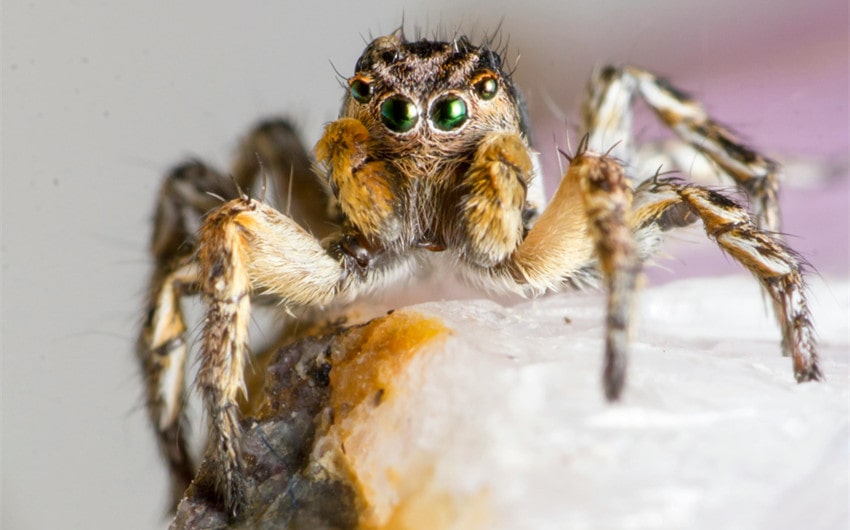
1. Do jumping spiders need companionship?
No, jumping spiders are solitary creatures and do not require companionship. In fact, housing multiple jumping spiders together can lead to aggression and cannibalism. Each spider should have its own separate enclosure to ensure their safety and well-being.
2. Are jumping spiders venomous?
Jumping spiders are venomous in the sense that they use venom to subdue their prey. However, their venom is not harmful to humans. If bitten, the bite may cause mild irritation or a small welt, similar to a mosquito bite. Jumping spiders are generally non-aggressive and will only bite if they feel threatened.
2. How can you tell the gender of a jumping spider?
Determining the gender of a jumping spider can be challenging, but there are a few indicators. Males typically have larger, more pronounced pedipalps (the appendages near their mouthparts) that resemble boxing gloves.
They may also exhibit brighter colors and more intricate patterns compared to females. Females tend to be larger in body size and have rounder abdomens. Observing these physical characteristics can help in identifying the gender of your spider.
3. What should I do if my jumping spider escapes?
If your jumping spider escapes, remain calm and try to locate it as quickly as possible. They often seek out dark, quiet places, so check behind furniture, under appliances, and in corners. Use a small container or cup to gently capture the spider and return it to its enclosure. To prevent future escapes, ensure the enclosure is secure with a tightly fitting lid.
4. Can jumping spiders recognize their owners?
While jumping spiders do not form bonds with their owners like mammals or birds, they can recognize and become accustomed to their environment and regular interactions. They may become less skittish and more tolerant of handling over time, especially if interactions are gentle and positive.
5. How often should I clean the enclosure?
Spot clean the enclosure weekly to remove uneaten prey and waste. A thorough cleaning, including replacing the substrate and wiping down the enclosure, should be done every few months. Regular cleaning helps prevent mold growth and maintains a healthy environment for your spider.
6. Can jumping spiders be trained?
Jumping spiders cannot be trained in the same way as dogs or other pets, but they can learn to associate certain actions with positive outcomes. For example, they may recognize when it’s feeding time or become accustomed to gentle handling. Consistent, positive interactions can help make them more comfortable with their environment and your presence.

